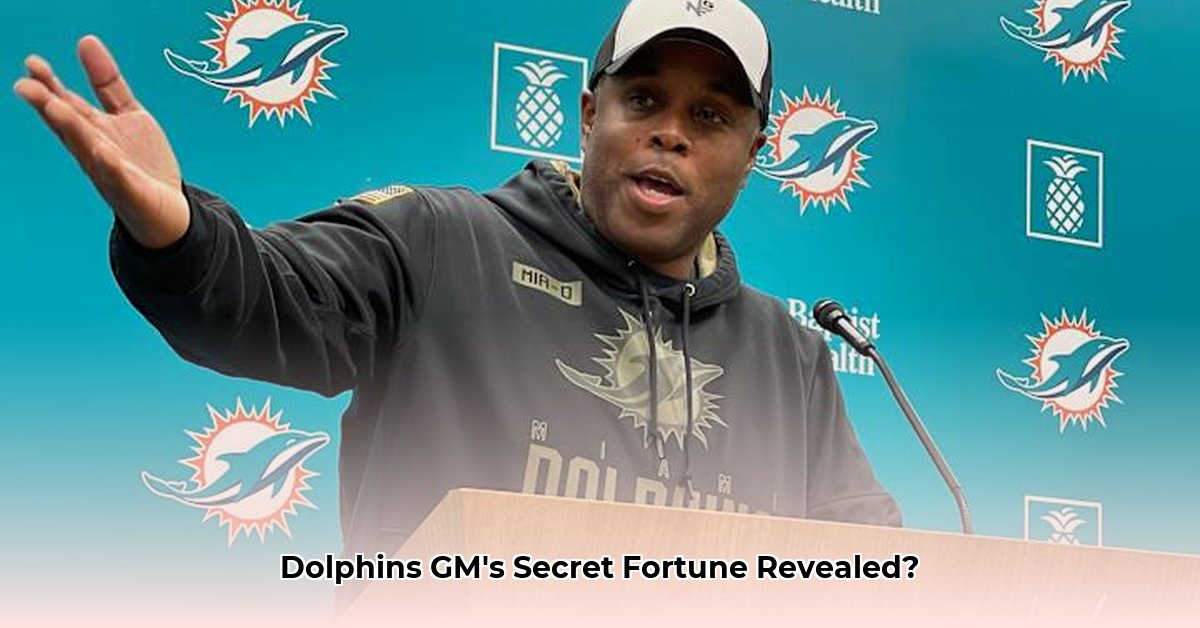
Chris Grier's ten-year tenure as General Manager of the Miami Dolphins has been a complex tapestry woven with threads of both brilliance and baffling missteps. While his net worth undoubtedly reflects his high-profile position, the true measure of his success lies not in his bank account, but in the team's performance on the field. This critical review examines the highs and lows of his decade at the helm, exploring the impact of ownership influence, coaching changes, and the persistent questions surrounding his long-term vision.
A Decade of Ups and Downs: Evaluating Grier's Performance
Grier's drafting has yielded both spectacular successes and frustrating disappointments. Jaylen Waddle's emergence as a star receiver stands as a clear testament to his scouting prowess. However, the Tua Tagovailoa selection, while showing flashes of brilliance, remains a subject of ongoing debate, highlighting the inherent uncertainty in quarterback evaluations. His willingness to make bold trades, such as the acquisition of Tyreek Hill, demonstrates a willingness to take risks, though the overall success rate of these trades is a mixed bag. His ability to navigate the complexities of player acquisitions is undeniable, showcasing his expertise in asset management even during controversial negotiations. The continued confidence shown in him by owner Stephen Ross, evidenced by his longevity in the role, speaks volumes about his perceived value within the organization.
Yet, the Dolphins' consistent failure to reach the playoffs casts a long shadow on his accomplishments. Moments of brilliance are often followed by disappointing collapses, raising concerns about a lack of cohesive long-term strategy. The offensive line's persistent struggles, a recurring theme throughout his tenure, have been a major source of frustration for fans and analysts alike. This inability to achieve sustained success, despite considerable resources and coaching changes, is a critical area needing further scrutiny.
The Influence of Ownership: A Complicated Equation
Analyzing Grier's performance requires acknowledging the multifaceted dynamics within the Dolphins' organization. Some observers suggest his actual decision-making power may be less absolute than it appears, hinting at a potential influence from ownership or the head coach in key personnel decisions. Determining Grier's individual contribution to the team's performance is complicated by the interplay of these various forces and the lack of transparent communication surrounding the decision-making processes.
Navigating the Future: Risks and Opportunities
What lies ahead for Grier and the Dolphins? The challenges are substantial.
| Risk Factor | Likelihood | Potential Impact | Possible Mitigation Strategies |
|---|---|---|---|
| Offensive Line Struggles | High | Severe | Dedicated draft capital and free agency spending on offensive line upgrades |
| Playoff Drought | High | Significant | Implementation of a robust long-term strategic plan and advanced player evaluation techniques |
| Influence from Ownership | Moderate | Moderate | Establishment of clear, well-defined roles and responsibilities within the organization |
| Coaching Turnover | Moderate | High | Emphasis on long-term coaching contracts and building a stable, consistent coaching team |
These challenges demand decisive and immediate action. Can Grier overcome these obstacles? His future, and the Dolphins' trajectory, depends heavily on his ability to do so.
The Bigger Picture: Beyond the Balance Sheet
While Grier's net worth is undoubtedly significant, his legacy will not be defined solely by his financial success. The ultimate measure of his tenure will be the Dolphins' long-term performance. Has he built a solid foundation for sustained success, or will his time in Miami be remembered for unrealized potential? Only time will provide the definitive answer. His long-term strategic decisions, coupled with his navigation of the NFL's complex landscape, will ultimately determine his lasting impact, not just the size of his bank account.
Key Takeaways: A Decade in Review
Three pivotal points emerge from this analysis of Chris Grier’s decade as Dolphins GM:
Inconsistent Performance: Grier's tenure showcases a blend of successful moves and costly errors, highlighting inconsistencies in draft selection and free agency strategy. While some draft picks have blossomed into stars, others have failed to meet expectations, leading to questions about the overall effectiveness of his evaluation processes.
Intricate Organizational Dynamics: The influence of ownership and coaching changes significantly complicates the assessment of Grier’s direct impact on the team's performance. A clearer delineation of responsibilities within the organization would aid in more accurate evaluation.
The Need for a Long-Term Vision: A consistent, long-term strategic plan for roster building and development remains a crucial element for the Dolphins to achieve sustained success. The ongoing struggles suggest a need for a more cohesive, forward-thinking approach.
The story of Chris Grier’s time in Miami is far from over. Only time will reveal the full extent of his impact on the franchise, and whether his tenure ultimately leads the Dolphins to sustained success.